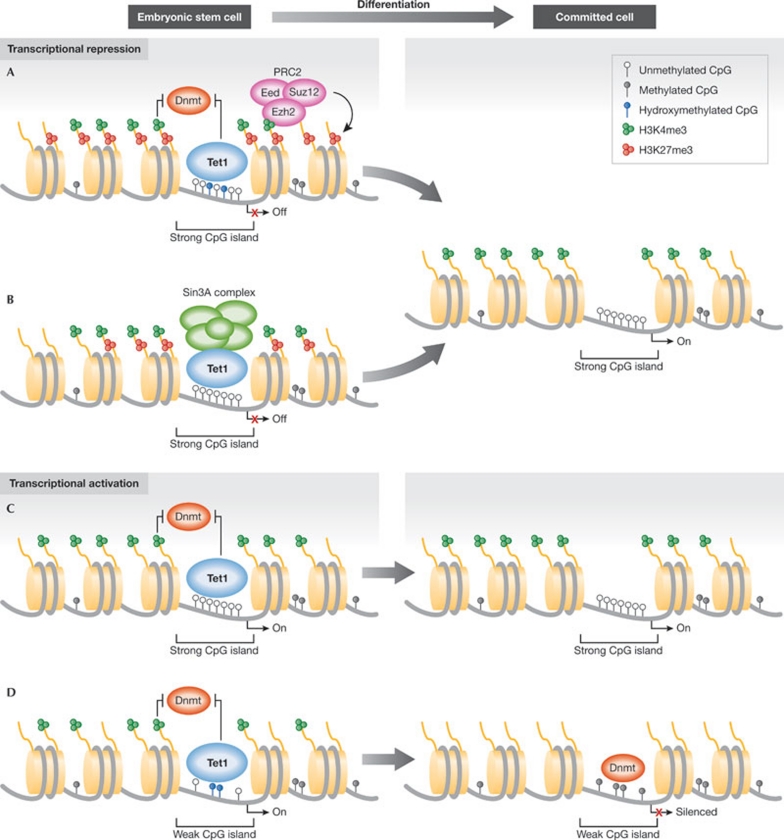Figure 2.
Potential roles of Tet1 in transcriptional regulation. (A,B) Tet1 could be involved in transcriptional repression in ESCs through the recruitment of repressive complexes. Tet1 has been proposed to facilitate PRC2 binding indirectly by reducing DNA methylation at PRC2 target genes (A). Moreover, Tet1 could mediate transcriptional repression by directly recruiting the Sin3A co-repressor complex to a subset of its target genes (B). During differentiation, Tet1 is downregulated, which would allow for the repressed genes to be activated. (C,D) Tet1 might also contribute to transcriptional activation by preventing DNA methylation. At strong CpG islands that rarely undergo DNA methylation, Tet1 binding might act as a failsafe mechanism to remove aberrant DNA methylation (C). However, Tet1 also binds to weak CpG islands that have been reported to become de novo DNA-methylated during differentiation. They often also display high levels of 5hmC, indicating that Tet1, by converting 5mC into 5hmC, ensures the timely methylation and silencing of these target genes during differentiation (D). 5hmC, 5-hydroxymethylcytosine; ESC, embryonic stem cell; PRC, Polycomb repressive complex; Tet1, ten-eleven translocation 1.

